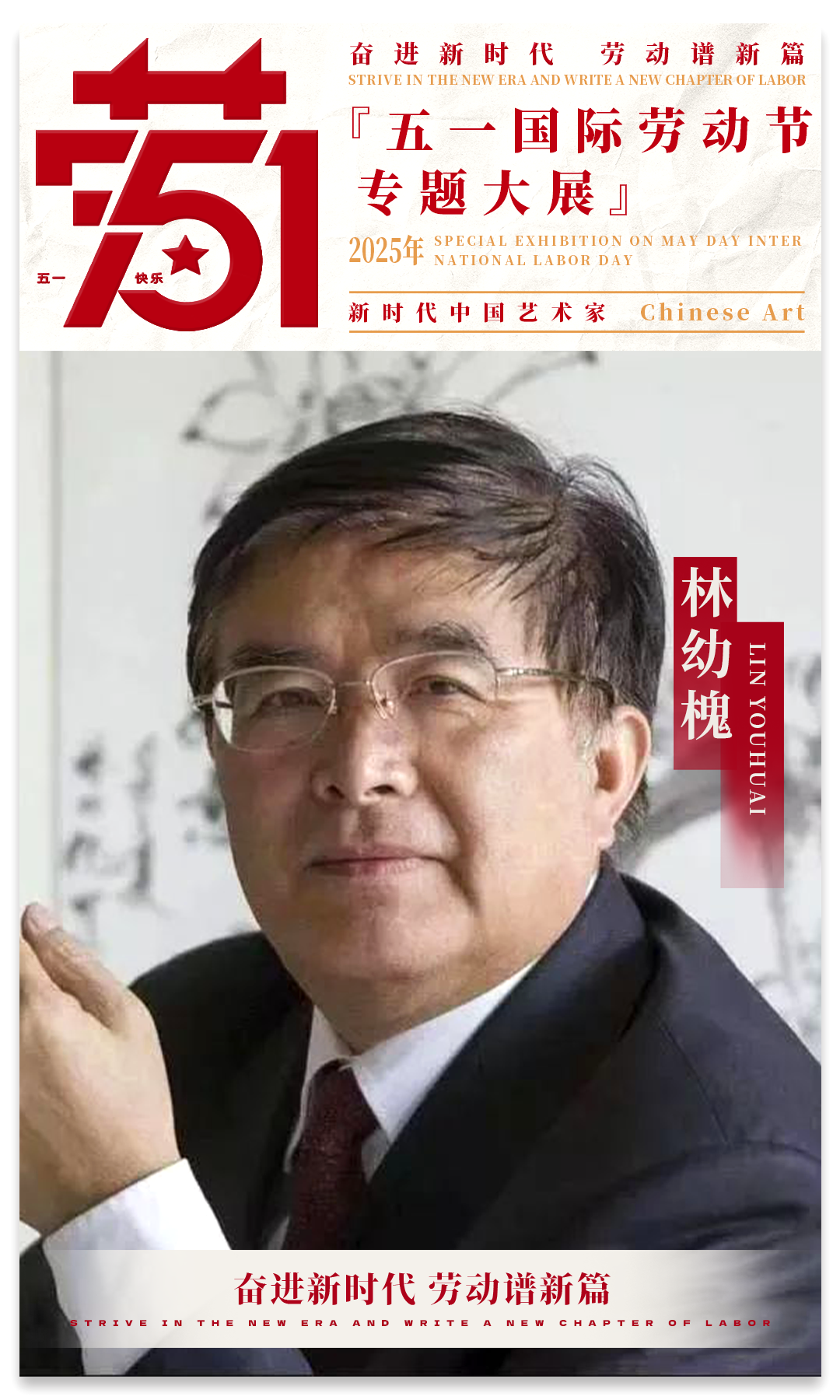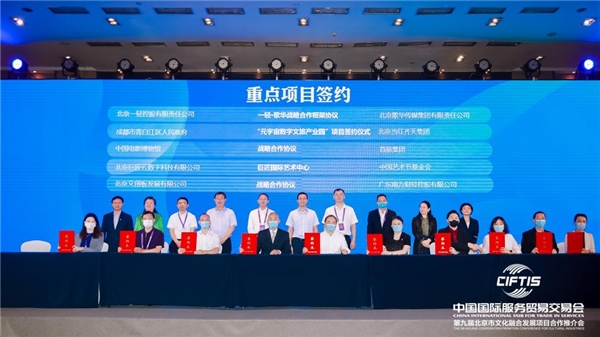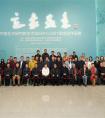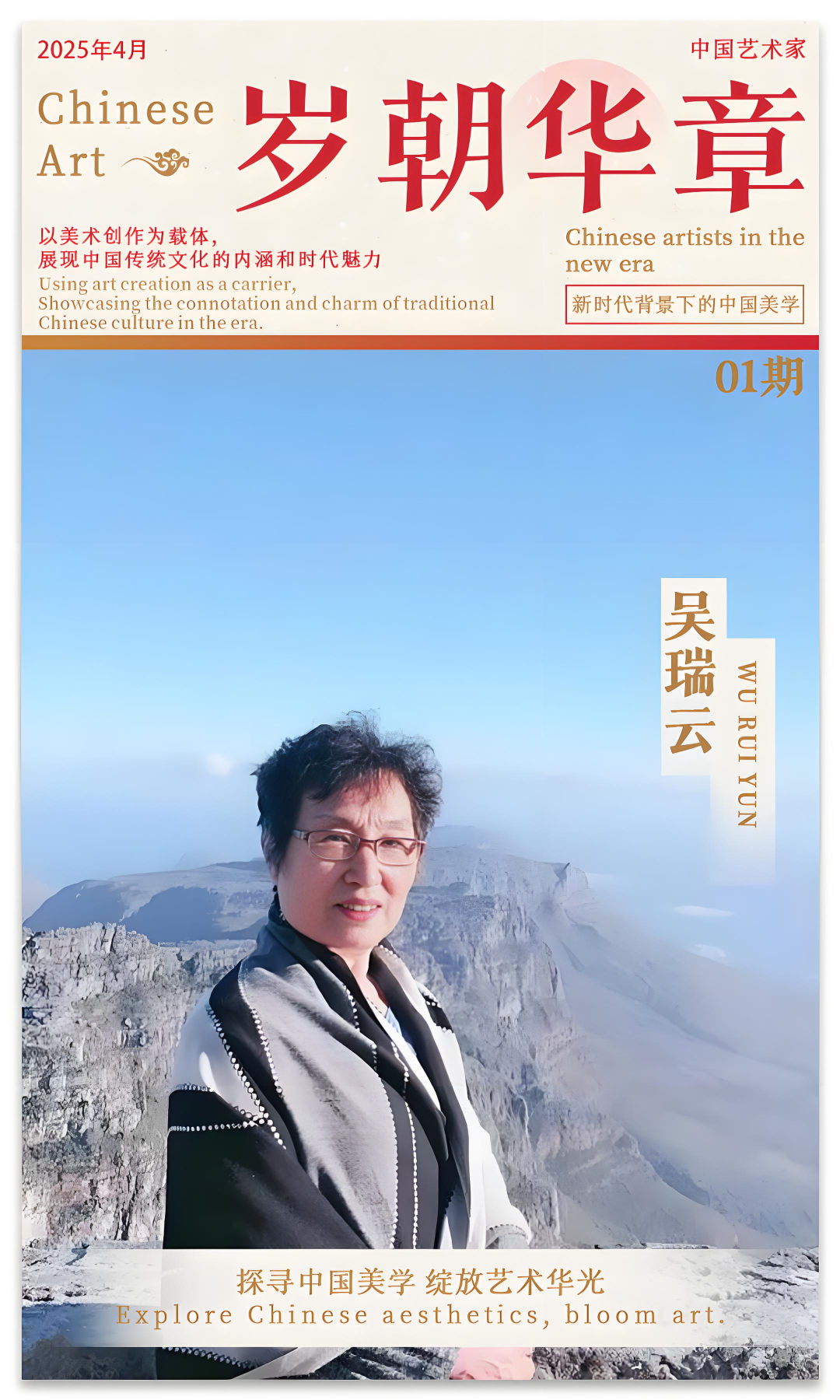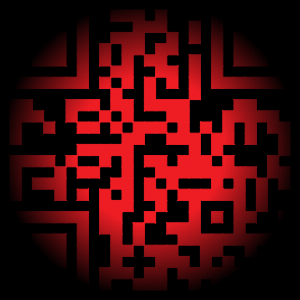艺术个案研究 |徐仲偶:“沉默的力量” | 2025
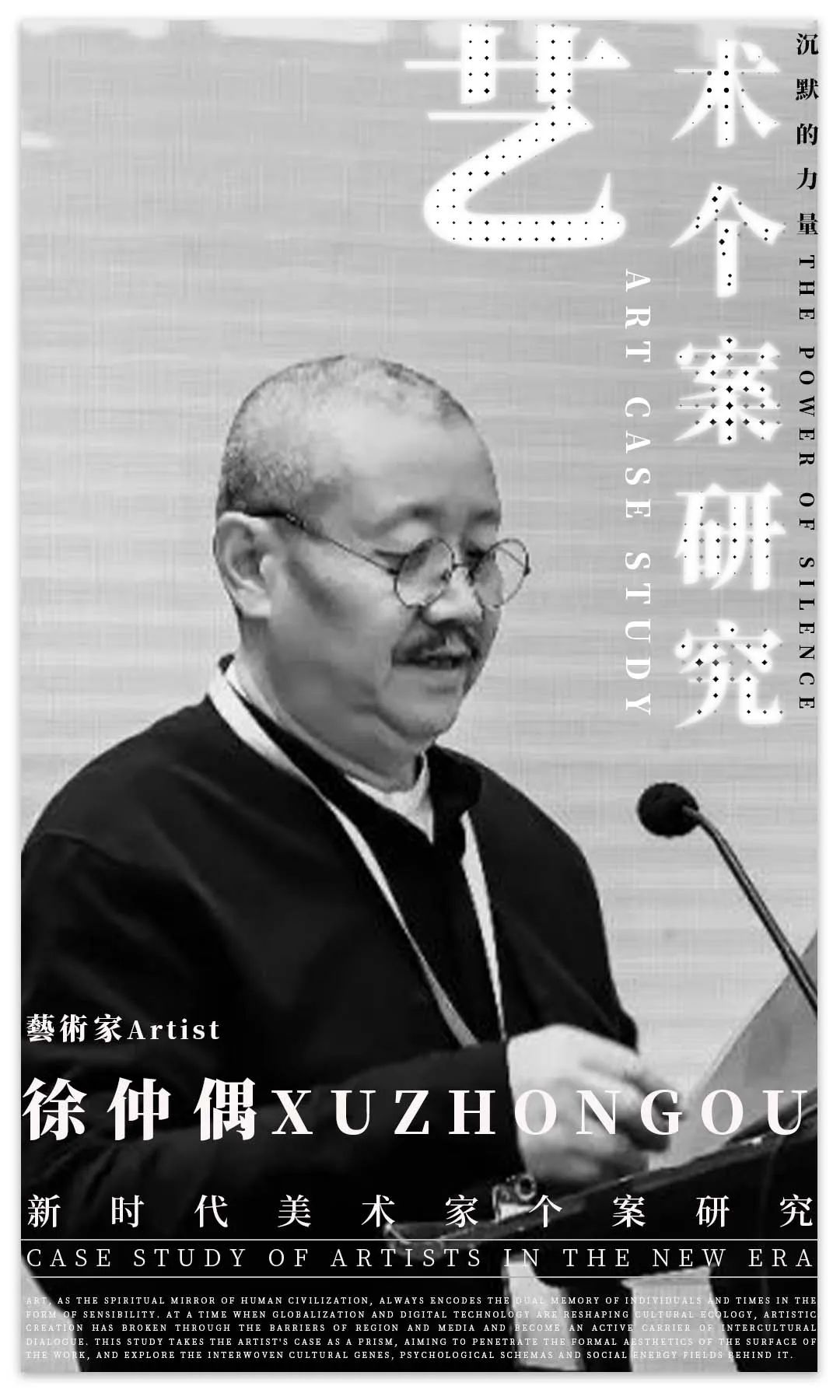
艺术,作为人类文明的精神镜像,始终以感性形式编码着个体与时代的双重记忆。在全球化与数字技术重塑文化生态的当下,艺术创作已突破地域与媒介的藩篱,成为跨文化对话的活性载体。本研究以艺术家个案为棱镜,旨在穿透作品表层的形式美学,探求其背后交织的文化基因、心理图式与社会能量场。
传统艺术史研究常受限于风格演进线性叙事或天才论范式,易将艺术家简化为艺术运动的时间注脚。本课题则尝试构建“微观—中观—宏观”的三维研究模型:通过视觉符号的考古学解构(微观),还原个体创作系统的生成密码;借助跨地域艺术家社群的比较研究(中观),定位个案在文化迁徙中的坐标位移;最终连接后殖民理论、媒介生态学等视角(宏观),揭示艺术实践如何作为社会变革的隐形推手。方法论上,除图像志分析与档案梳理外,更引入数字人文工具进行创作母题的语义网络建模,并采用参与式民族志深入艺术家工作室,捕捉未被文本化的创作现场逻辑。
此研究的学术价值不仅在于填补某艺术家系统性研究的空白,更试图回应当代艺术研究的范式危机——当NFT艺术颠覆物质性、AI创作挑战作者主体性时,个案研究如何超越传记式书写,成为解码文化转型的密匙?我们期待这项研究能为艺术社会学提供新的分析单元,同时启示文化机构构建更具生态性的艺术评价体系。
全文将以“创作语言的重构—文化身份的协商—社会介入的路径”为线索,在流动的现代性语境中,展开一场关于艺术主体性如何在不同权力场域中自我重塑的思s想实验。这既是对个体艺术生命的深度凝视,亦是对艺术何为的当代诘问。
Art, as the spiritual mirror of human civilization, has always encoded the dual memory of individuals and the times in the form of sensibility. In the current era of globalization and digital technology reshaping the cultural ecology, artistic creation has broken through the barriers of region and medium, becoming an active carrier of cross-cultural dialogue. This study takes the case of artists as a prism, aiming to penetrate the superficial form aesthetics of the works and explore the cultural genes, psychological schemata and social energy field intertwined behind them.
The study of traditional art history is often limited by the linear narrative of style evolution or the paradigm of genius theory, which easily reduces artists to time notes of art movements. This topic attempts to build a three-dimensional research model of "micro-meso-macro": through the archaeological deconstruction of visual symbols (micro), to restore the generation code of individual creative systems; using comparative research of cross-regional artist communities (meso), to locate the coordinate displacement of cases in cultural migration; finally, connecting post-colonial theory, media ecology, and other perspectives (macro), to reveal how art practice acts as an invisible driver of social change. In terms of methodology, in addition to iconographic analysis and archival sorting, digital humanities tools are introduced to model the semantic network of creative themes, and participatory ethnography is used to capture the logic of untextualized creative scenes in artists' studios.
The academic value of this study lies not only in filling the gap of systematic research on a certain artist, but also in responding to the paradigm crisis of contemporary art research - when NFT art subverts materiality and AI creation challenges the author's subjectivity, how can case studies transcend biographical writing and become the key to decoding cultural transformation? We hope that this study can provide a new analysis unit for art sociology, and at the same time inspire cultural institutions to build a more ecological art evaluation system.The full text will take "the reconstruction of creative language - the negotiation of cultural identity - the path of social intervention" as the clue, and carry out a thought experiment on how the artistic subjectivity self-reconstructs in different power fields in the context of flowing modernity. This is not only a deep gaze at the individual artistic life, but also a contemporary questioning of what art is.

徐仲偶
中国美术家协会会员
中国版画家协会会员
中国工艺美术家协会会员
中央美术学院教授
中央美术学院城市设计学院前院长
中国艺术研究院中国版画院原副院长
宁波大学潘天寿建筑与艺术设计学院院长
擅长:1994 年受邀为美国马里兰州艺术学院客座教授,被巴尔的摩市政府授予终身荣誉市民。1995 年受邀为美国前总统乔治布什完成巨幅肖像,作品被美国德克萨斯州布什总统图书馆收藏。《青龙镇》系列及《榫卯》系列部分作品被大英博物馆及英国木板基金会永久收藏。获全国第十届美术作品银奖、获全国第十一届版画展铜奖、获全国第十七届版画展优秀奖、获文化部鲁迅版画创作奖、获波兰国际版画双年展奖。
Xu Zhong Yue
Member of the Chinese Association of Painters
Member of the Chinese Society of Printmakers
Member of the Chinese Association of Craftsmen and Painters Professor at the Central Academy of Fine Arts
Former Dean of the School of Urban Design at the Central Academy of Fine Arts
Former Vice President of the China Printed Art Institute of the Chinese Academy of Arts
Dean of Pan Tianshou School of architecture and art design, Ningbo university
In 1994, he was invited to be a visiting professor at the Maryland Institute College of Art in Lanzhou, and was awarded a lifetime honorary citizen by the city of Baltimore.In 1995, he was invited to complete a massive portrait of former U.S. President George W. Bush, which is in the collection of the Bush Presidential Library in Texas.Parts of the "Green Dragon Town" series and the "Hawu" series are in the permanent collections of the British Museum and the British Boarding Foundation.Won the National 10th Silver Prize for Fine Arts、Won bronze medal at the 11th National Printed Art Exhibition、Won the outstanding award at the 17th National Printed Art Exhibition、Awarded for the creation of Lu Xun's prints by the Ministry of Culture、Won an award at the International Printed Art Biennale in Poland.

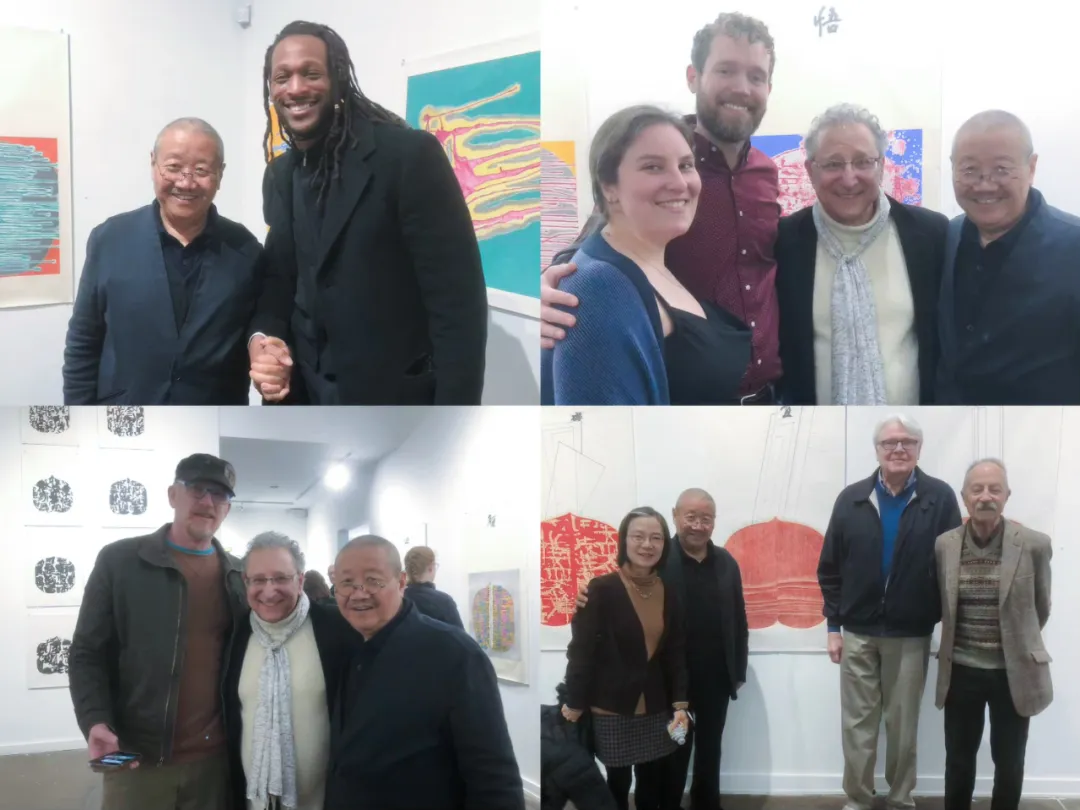
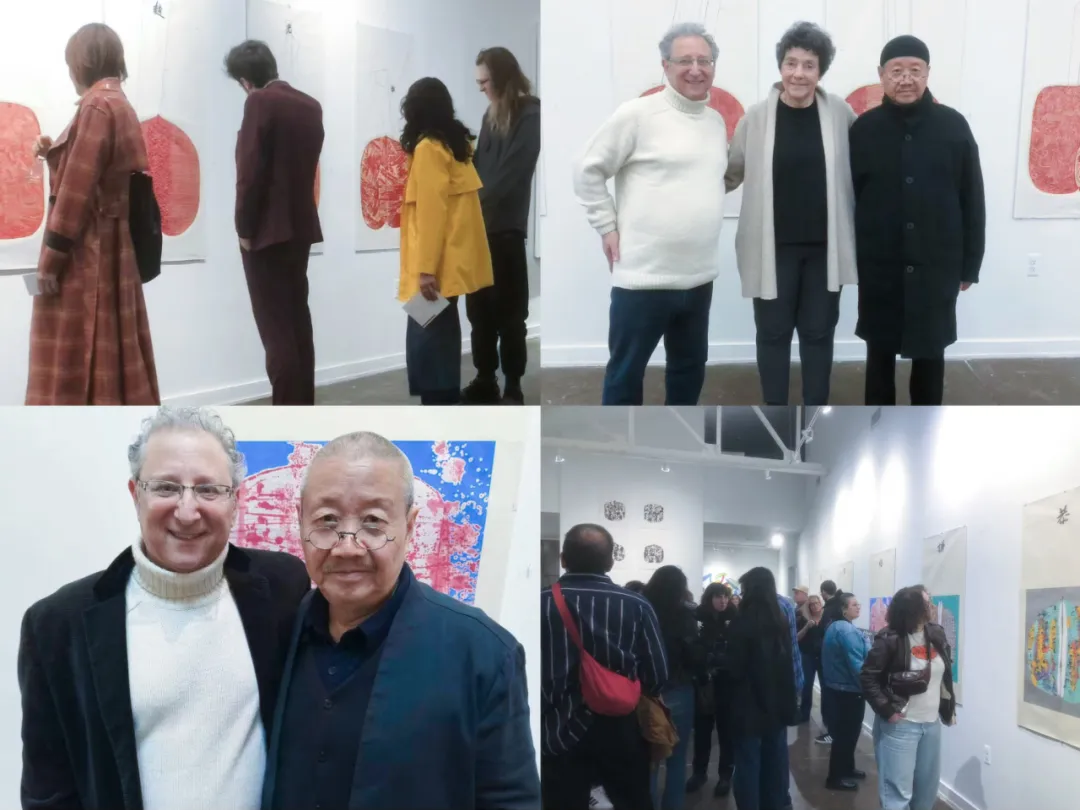

独以“核桃”启世人
The walnut enlightens the world
——徐仲偶《以核桃的名义》作品系列评述
-- Review of Xu Zhongou's Series "In the Name of Walnuts"
周至禹 Zhou Zhiyu
《礼记·檀弓下》曰:“师出有名”,中国古代讲师出有名。名要有义。名义的意思则是:做某事时用来作为依据的名称或称号,是与事物的实际有别的名称。名与义,便是符号的能指与所指。徐仲偶的版画系列《以核桃的名义》,便是以核桃之名,另宣别义。
The Book of Rites: Tan Gong Xia states: "A teacher must have a name." In ancient China, a teacher must have a name. A name should have righteousness. The meaning of "name" is: the name or title used as the basis for doing something, which is a name different from the actual thing. Name and meaning are the signifier and signified of a symbol. Xu Zhongou's print series "In the Name of Walnut" uses the name of walnut to convey a different meaning.


Artist: Zhongou Xu
Title: In the name of Walnut叠 Stack
Medium: mixed media (woodcut, ink,
color ink calligraph on rice paper)
Size: 27”(w)x 54”(h )
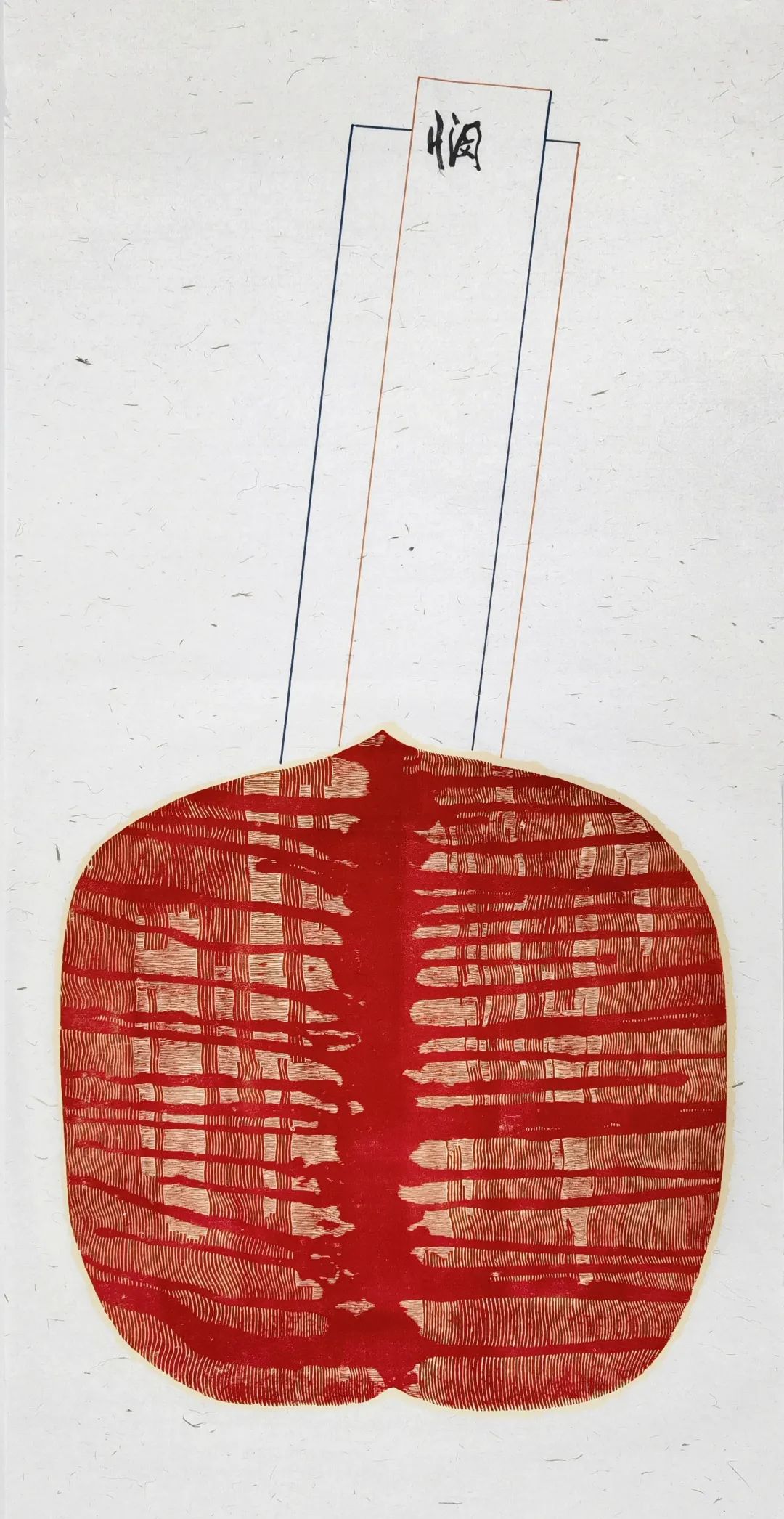
核桃有何名?中国的文化传统,惯以自然事物为象征,赋予其一定的意义。在古代,梅兰竹菊被人称为“四君子”,便是因其品质分别象征了:傲、幽、坚、淡。在民间,吉祥符号则常常通过借喻、比拟、双关、谐音、象征等手法来创造图像加以体现,例如富贵有余(鱼)。很多人家婚娶喜事要用大枣、花生、桂圆、莲子组成果盘象征“早生贵子”。 上世纪八十年代中期,西方符号学理论进入中国,绘画从叙事转向表现,徐仲偶便开始思考中国绘画艺术如何走向现代的问题,而如果走向现代,就需要创造新的符号,而不是沿用旧有符号继续言说。对于重复一个社会全体成员共同约定的用来表示某种意义的记号或标记,徐仲偶并无兴趣。他想要创造一个全新的形象,于是就选择核桃作为符号。
What is the name of walnut? China's cultural tradition is accustomed to taking natural things as symbols and endowing them with certain meanings. In ancient times, plum blossoms, orchids, bamboo and chrysanthemums were called the "Four Gentlemen" because their qualities respectively symbolized: arrogance, seclusion, firmness and simplicity. In folk culture, auspicious symbols are often created through techniques such as metaphor, analogy, puns, homophones, and symbolism to represent them, for instance, "abundance and wealth" (fish). Many families use jujubes, peanuts, longans and lotus seeds to form a fruit plate for weddings and happy events, symbolizing the early birth of a noble child. In the mid-1980s, Western semiotic theories entered China, and painting shifted from narrative to expression. Xu Zhongou began to ponder how Chinese painting art could move towards modernity. If it did move towards modernity, it was necessary to create new symbols instead of continuing to express with old ones. Xu Zhongou had no interest in repeating the marks or symbols agreed upon by all members of a society to represent certain meanings. He wanted to create a brand-new image, so he chose the walnut as the symbol.

Artist: Zhongou Xu
Title: In the name of Walnut光 Light
Medium: mixed media (woodcut, ink,
color ink calligraph on rice paper)
Size: 27”(w)x 54”(h )


Artist: Zhongou Xu
Title: In the name of Walnut护 Protect
Medium: mixed media (woodcut, ink,
color ink calligraph on rice paper)
Size: 27”(w)x 54”(h )
此外,在上世纪八十年代,文化开放,《金瓶梅》解禁也是其中一个标志,代表着人性开始释放,性的正确认识鲜明地代表着社会的进步,出于这几重思考,徐仲偶以核桃为符号,便是想借用核桃所具有的对称图形,所能引发的形象联想,企图创造一个新的符号,借以表达其更为广阔的生命意象,传达出生命本体的庄严丰富而非淫秽,更通过延伸的表现,传达出对人的肯定。作为人,作为人性,都曾经在以往的一个时间中被摧残,被压抑,被消解到无以复加的地步。徐仲偶在核桃系列中引入了他对生命、性及传统文化诸如宗教、哲学、书法、神祗、山水、卦象,乃至现代社会生活方方面面的抽象的哲理思考。在形式处理上,他以核桃外形的相似性引来特定联想,利用单纯的外形作为一种生命符号,并在其中描绘极为丰富的内容,借此展开中国文化角度的无穷无尽的符号联想,借用核桃这一独特形象加以符号之形式化的独创处理,来表达对母性之生命与文化的哲学思考。
Furthermore, in the 1980s, with the opening up of culture, the lifting of the ban on "Jin Ping Mei" was also a sign, representing the beginning of the release of human nature. The correct understanding of sex clearly represented the progress of society. Out of these considerations, Xu Zhongou used the walnut as a symbol, hoping to draw on the symmetrical shape of the walnut and the image associations it could evoke, in an attempt to create a new symbol. To express its broader life image, convey the solemnity and richness of the life essence rather than obviousness, and through extended expressions, convey the affirmation of human beings. As human beings, as human nature, we have all been crushed, suppressed and dissolved to an extreme degree at some point in the past. In his walnut series, Xu Zhongou introduced his abstract philosophical reflections on life, sex, and traditional cultures such as religion, philosophy, calligraphy, deities, landscapes, and hexagrams, as well as all aspects of modern social life. In terms of form processing, he drew specific associations based on the similarity of the walnut's shape, using the simple shape as a life symbol and depicting extremely rich content within it. Through this, he unfolded endless symbolic associations from the perspective of Chinese culture. By borrowing the unique image of the walnut and applying the original formalization treatment of the symbol, he expressed philosophical thoughts on the life and culture of motherhood.
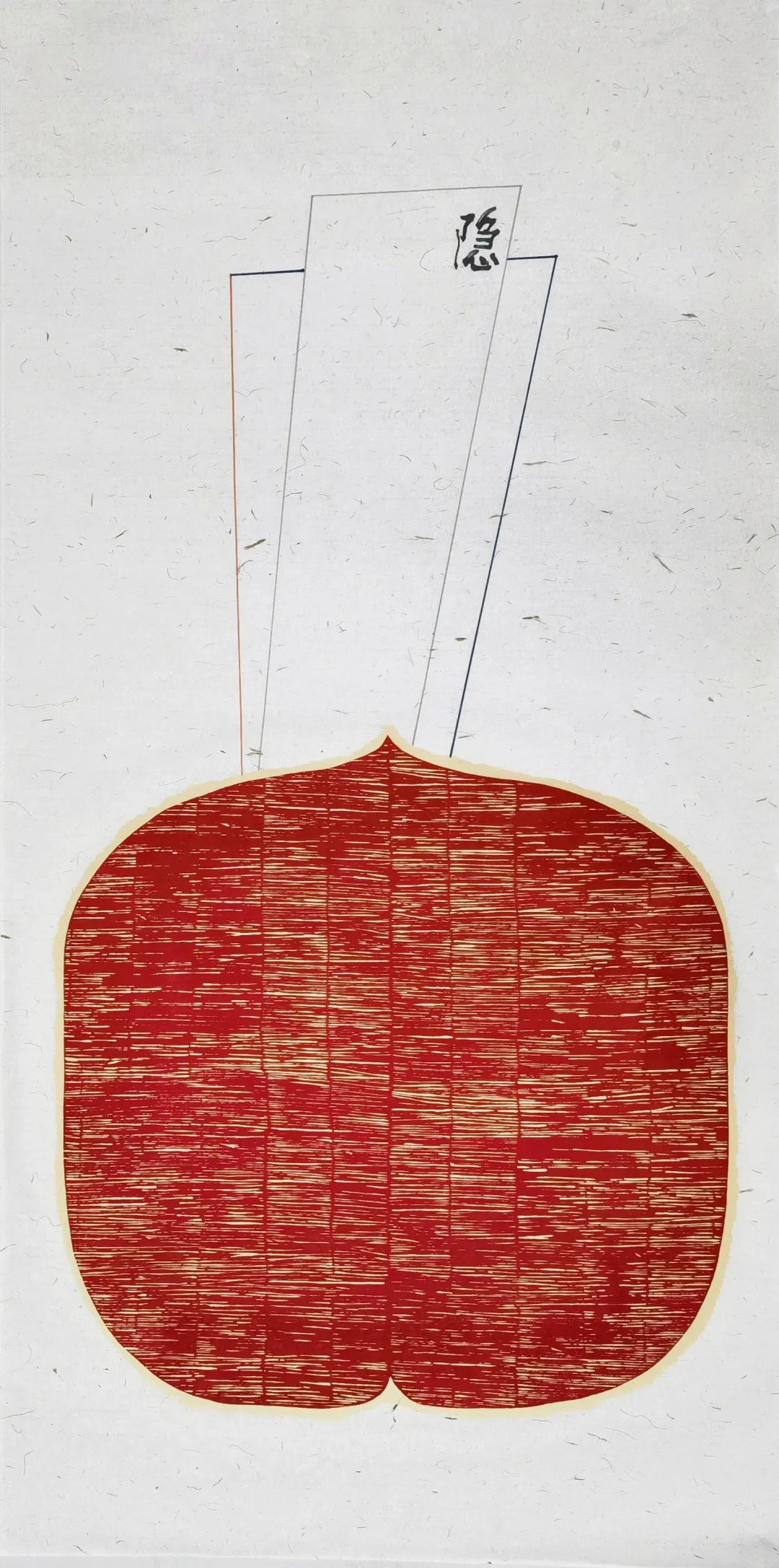


Artist: Zhongou Xu
Title: In the name of Walnut碍 Hinder
Medium: mixed media (woodcut, ink,
color ink calligraph on rice paper)
Size: 27”(w)x 54”(h )
徐仲偶作品的特征之一:确定性和不确定性的呈现
观看徐仲偶的作品,会发现在核桃作为基本外形的内核之中,总是贯穿着许多并非明确的意象表达,在核桃的剪影之中,贯穿了各种不确定的处理。这种表达以各种抽象线条和黑白的方式加以形成,并且徘徊于似与不似之间,这就形成了这个版画系列的一个特征,各种直线和竖线,各种不规则的交错线条,都被坚定而有机地置入核桃的剪影之内。例如编织纹形成禁锢的隐喻,横线和竖线形成了对立统一的态势,密集的排线形成了垂帘听政的遮蔽效果,交错的线条造成了窃窃私语的不安。绝对的不确定性,便是世界的本来面目,而相对的不确定性,时时出现在我们的生活认知之中,信息不完全、来源不一致、表述不精确、内容具有变化性,都造成了不确定性的出现,而不确定性让艺术的表述更加丰富而多义,形成了阐释的多重性。
One of the characteristics of Xu Zhongou's works is the presentation of certainty and uncertainty
When viewing Xu Zhongou's works, one will find that within the core shape of the walnut, there are always many ambiguous imagery expressions running through it. Within the silhouettes of the walnut, various uncertain treatments are carried through. This expression is formed in various abstract lines and in black and white, and wanders between likeness and unlikeness. This forms a feature of this print series: all kinds of straight and vertical lines, as well as various irregular interlaced lines, are firmly and organically placed within the silhouette of the walnut. For instance, the woven patterns form a metaphor of confinement, the horizontal and vertical lines create a situation of unity in opposition, the dense arrangement of lines creates a shielding effect of ruling behind a curtain, and the interlaced lines create an uneasy sense of whispering. Absolute uncertainty is the true nature of the world, while relative uncertainty constantly exists in our life cognition. Incomplete information, inconsistent sources, imprecise expressions, and variable content all contribute to the emergence of uncertainty. Uncertainty makes the expression of art more rich and multi-meaning, forming the multiplicity of interpretation.
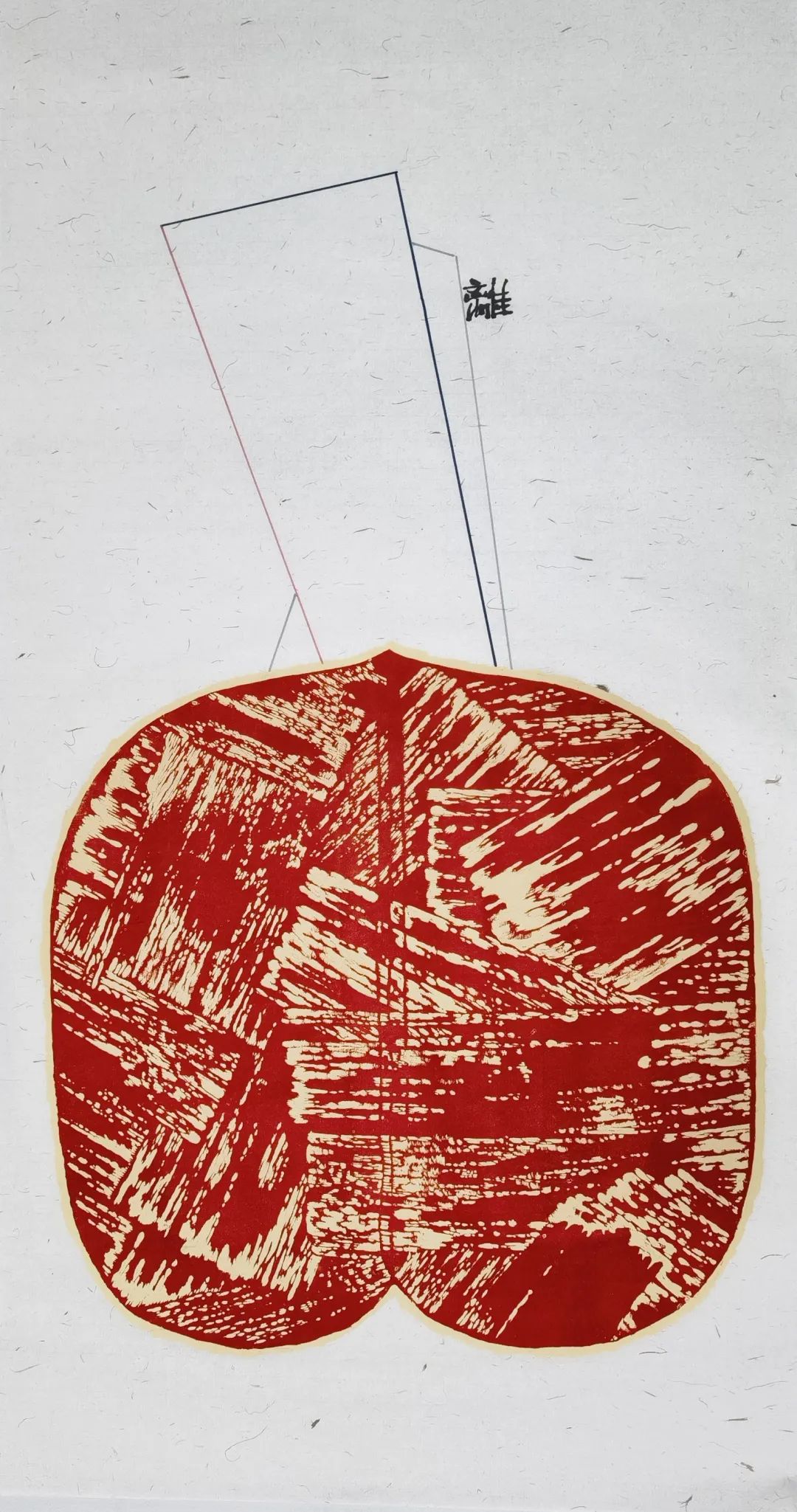
Artist: Zhongou Xu
Title: In the name of Walnut离 leave
Medium: mixed media (woodcut, ink,
color ink calligraph on rice paper)
Size: 27”(w)x 54”(h )

Artist: Zhongou Xu
Title: In the name of Walnut潜 Latent
Medium: mixed media (woodcut, ink,
color ink calligraph on rice paper)
Size: 27”(w)x 54”(h )

这种不确定性和确定性的关系,时常以抽象与具象的方式出现。而某些部分,又隐隐带有形象的表现,造成了抽象和具象的对比,而具象又在牵引着联想,并且暗示了抽象具有隐喻的可能,,生命的显性与隐性特征也在这种抽象与具象的表现中流露出来。这种抽象与具象的有机和谐处理,体现出一种间的表达。徐在自己的艺术见解中常常谈到“间”字,来表明他对艺术表达的一种高度认识:只有间接,方能够更为含蓄地表达隐喻,造成一种诗意效果,这种诗意又隐隐地透露出一种中国传统文化中特有的禅意来。其确定性展现在核桃中部不断开合的竖线处理上,呈现出清晰的理性处理,鲜明地表现出符号应有的特质。符号如果不具备鲜明的所指,就失去了其意义,而不确定性的弥散,又不断地丰富着符号的所指,让符号不至于单一而乏味。
This relationship between uncertainty and certainty often emerges in an abstract and concrete way. In some parts, there is a subtle expression of imagery, creating a contrast between the abstract and the concrete. The concrete, in turn, leads to association and implies that the abstract has the potential to be metaphorical. The explicit and implicit characteristics of life are also revealed in this expression of the abstract and the concrete. This organic and harmonious treatment of the abstract and the concrete reflects an indirect expression. Xu often mentions the character "间" in his artistic insights to demonstrate his profound understanding of artistic expression: only through indirect means can metaphors be expressed more implicitly, creating a poetic effect. This poetic quality, in turn, subtly reveals a unique Zen-like quality inherent in traditional Chinese culture. Its certainty is manifested in the continuous opening and closing of the vertical lines in the middle of the walnut, presenting a clear rational treatment and vividly demonstrating the characteristics that the symbol should have. If a symbol does not have a distinct referent, it loses its meaning. However, the dispersion of uncertainty constantly enriches the referent of the symbol, preventing it from being monotonous and dull.
以核桃的名义、之一、之二、之三、之四、

Artist: Zhongou Xu
Title: In the name of Walnut
CalligraphyIII-7
Medium: Sumi ink
Calligraphy on
rice paper
Size 12.6”x11.4”

Artist: Zhongou Xu
Title: In the name of Walnut
CalligraphyIII-6
Medium: Sumi ink
Calligraphy on
rice paper
Size 12.6”x11.4”
徐仲偶作品的特征之二:生命的感性冲动和理性认知
在核桃系列里,有一些画面流露出特有的女性器官形象。古代社会的一些陶塑中,着重表现具有特殊含义的女性特征,对女性下部的腹部、臀部、腿部给予夸张的表现,这种表现在世界各个文明早期的地区均有出现,统一呈现出一种上古时代生育崇拜的信仰倾向。例如半坡陶器上的鱼纹,就是女阴的象征,表达了先民最初的生殖崇拜观念,蛙纹或者叫蟾蜍纹,代表先民对子宫的崇拜;当鱼纹与蛙纹或者两种象征物结合在一起的时候,则表明远古先民对女性的生育功能和繁殖过程的认识得到深化。徐仲偶也是通过观察与思考,发现核桃形象的模糊性,再借外形和中部把握核桃与女性形象之间的相似性,从而创造出基于联想的抽象表现方法。而进一步,徐仲偶在核桃的两翼不断展开其想象,让生殖便具有了更为广泛的意义,从而体现出人的生命冲动形成的轨迹,而这种生命冲动又在一种高度的理性精神下加以平衡。
The second characteristic of Xu Zhongou's works: the perceptual impulse and rational cognition of life
In the walnut series, there are some scenes that reveal the distinctive images of female organs. In some pottery sculptures of ancient society, the special meanings of female features were emphasized, with exaggerated depictions of the lower abdomen, buttocks and legs of women. This kind of expression appeared in the early regions of various civilizations around the world, uniformly presenting a belief tendency of fertility worship in the ancient times. For instance, the fish pattern on Banpo pottery is a symbol of the female genitourage, expressing the earliest reproductive worship concept of our ancestors. The frog pattern, or toad pattern, represents the ancestors' worship of the uterus. When fish patterns are combined with frog patterns or both symbols, it indicates that the ancient people's understanding of the reproductive function and reproductive process of women was deepened. Xu Zhongou also discovered the ambiguity of the walnut image through observation and reflection, and then grasped the similarity between the walnut and the female image by means of the shape and the middle part, thereby creating an abstract expression method based on association. Furthermore, Xu Zhongou continuously expanded his imagination on the two wings of the walnut, endowing reproduction with a broader meaning, thereby reflecting the trajectory of the formation of human life impulses, and this life impulse is balanced under a highly rational spirit.


在徐仲偶看来,这种理性并非是禁锢人性,而是在赞美人性的基础上提升人性。这种认识在徐仲偶的版画制作中也体现出来,自由运行的刀痕和笔墨的线条穿插纵横,都带有鲜明的情感冲动,直觉的艺术敏锐,统一在整体高度有序的安排中。他自己说过:个体生命的价值高于一切,由此引发核裂变的动力。因此,观看徐仲偶的版画,你会感受到一种生命饱满的激情和力量,犹如《红高粱》里“酒神曲”一样的生命丰收的赞歌,健康而澎湃,让人为之回肠荡气。这种类似于西方的“酒神精神”,以一种永恒的态度呈现出对生命的意义和价值的肯定。
In Xu Zhongou's view, this kind of rationality is not about confining human nature, but rather about elevating it on the basis of praising it. This understanding is also reflected in Xu Zhongou's printmaking. The freely moving knife marks and the interwoven lines of the brush and ink all carry distinct emotional impulses and intuitive artistic acuity, which are unified in the highly orderly overall arrangement. He himself once said: The value of an individual life is above all else, which triggers the impetus for nuclear fission. Therefore, when viewing Xu Zhongou's prints, you will feel a full passion and strength of life, just like the "Wine God Song" in "Red Sorghum", a song of praise for the harvest of life, healthy and surging, making people feel moved and moved. This kind of "Dionysian spirit" similar to that in the West presents an affirmation of the meaning and value of life with an eternal attitude.

Artist: Zhongou Xu
Title: In the name of Walnut
CalligraphyIII-10
Medium: Sumi ink
Calligraphy on
rice paper
Size 12.6”x11.4”
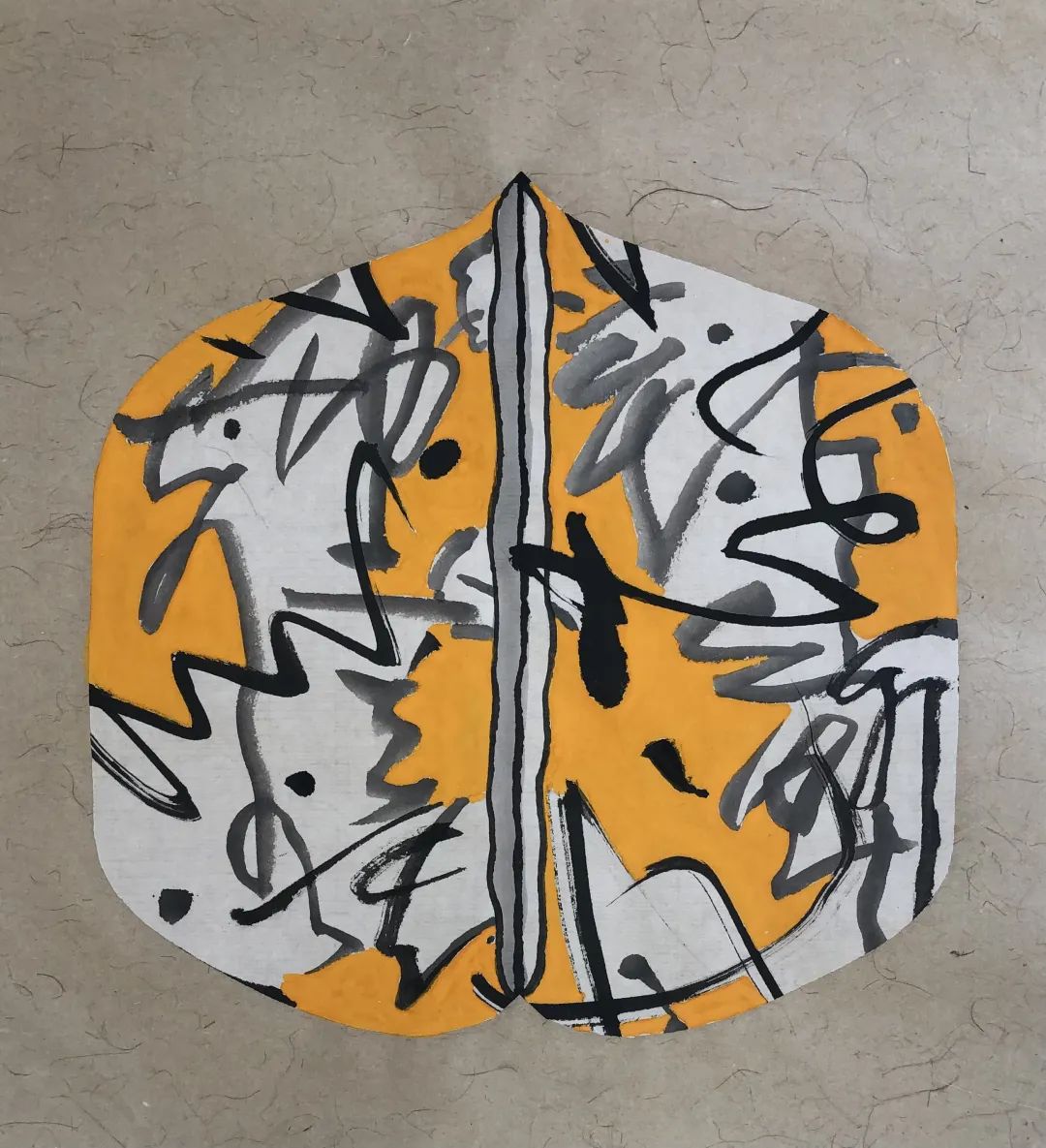
Artist: Zhongou Xu
Title: In the name of Walnut
CalligraphyIII-3
Medium: Sumi ink
Calligraphy on
rice paper
Size 12.6”x11.4“
徐仲偶作品的特征之三:从中国出发来追求艺术意气
徐仲偶的核桃系列,体现出一种中国气派。徐仲偶自己说过:“我要向世界表明一种态度:中国的艺术不在‘象’,是在“气”中下结论的。这是我的三条路:我是从‘象’中来的,但是我回归到‘意’中,现在又走向了‘气’。”在我看来,象是意的基础,而只有对对象“长时间的观察,你才会有深刻的体会。超长时间的感受一个物体对视觉艺术家是非常重要的品质。”(徐仲偶语)正是基于对核桃的不断延伸,他让核桃升华为一种鲜明多义的符号形象,从中又找到了意的内在表达,在表达意的时候以多样的视觉形象形成了气的贯穿流淌,讲究以刀代笔的骨法、力度、速度、节奏、韵律、笔势与章法,也有黑白关系的强烈对照,在处理所有这些语言要素的时候,气自始至终都是一种提纲挈领的核心要素。
The third feature of Xu Zhongou's works: pursuing artistic spirit starting from China
Xu Zhongou's walnut series embodies a Chinese style. Xu Zhongou himself once said, "I want to show the world an attitude: Chinese art does not draw conclusions based on 'image', but on 'qi'." These are my three paths: I came from the "image", but I returned to the "intention", and now I'm moving towards the "qi". In my opinion, image is the foundation of meaning, and only by observing the object for a long time can you have a profound understanding. Feeling an object for an extremely long time is a very important quality for visual artists. It is precisely based on the continuous extension of the walnut that he has elevated it to a distinct and multi-meaning symbolic image, from which he has found the inner expression of meaning. When expressing meaning, he forms the continuous flow of qi through diverse visual images, emphasizing the bone technique, strength, speed, rhythm, cadence, brushwork and composition of using the knife instead of the brush, as well as the strong contrast of black and white. When dealing with all these language elements, qi has always been a core element that Outlines the main points.

Artist: Zhongou Xu
Title: In the name of Walnut
CalligraphyIII-1
Medium: Sumi ink
Calligraphy on
rice paper
Size 12.6”x11.4”

Artist: Zhongou Xu
Title: In the name of Walnut
CalligraphyIII-9
Medium: Sumi ink
Calligraphy on
rice paper
Size 12.6”x11.4”
核桃内有着大量中国传统符号,徐仲偶把这些东方文化传统的符号予以改造、重组、变形、夸张,造成某种熟悉中的陌生,陌生中的熟悉。例如在核桃中门神的植入,将女性器官隐喻升华,中国文字的进入,时而模糊时而清晰,形成了一种视觉艺术的内在结构关系。而这种结构关系是徐仲偶始终加以探索的艺术要点。中国艺术的意和气,都是在这种内在结构的基础上形成的。但是,这并不意味着徐仲偶是拒绝西方艺术滋养的。其实,徐仲偶也善于将西方极具表现特征的艺术元素融汇到东方意象中,颠覆着人们对传统艺术空间视觉的审美经验,赋予具有中国特点的艺术以当代性意义,这是由传统精神的升华、改造而成的新的语言图式,一种主要由中国自身原发而成的中国当代艺术,显示出其文化价值取向上浓厚的东方基调。
Walnuts contain a large number of traditional Chinese symbols. Xu Zhongou transformed, reorganized, deformed and exaggerated these symbols of Eastern cultural traditions, creating a kind of familiarity within strangeness and strangeness within familiarity. For instance, the implantation of the door god in the walnut metaphorically elevates the female organ, and the entry of Chinese characters, sometimes blurred and sometimes clear, forms an internal structural relationship of visual art. And this structural relationship is the artistic key point that Xu Zhongou has always explored. The meaning and harmony of Chinese art are both formed on the basis of this internal structure. However, this does not mean that Xu Zhongou rejected the nourishment of Western art. In fact, Xu Zhongou is also adept at integrating the highly expressive artistic elements of the West into Eastern imagery, subverting people's aesthetic experience of traditional art space visuals and endowing art with Chinese characteristics with contemporary significance. This is a new language pattern transformed and elevated from traditional spirit, a kind of contemporary Chinese art mainly originated from China itself. It shows a strong Oriental tone in its cultural value orientation.
题目:以核桃的名义一一书写方式之一、之二、之三、之四、



Artist: Zhongou Xu
Title: In the name of Walnut
CalligraphyI-1
Medium: Sumi ink Calligraphy on
rice paper
Size 20”x26.5”
徐仲偶作品的特征之四:多重的线条意象和技术突破
《以核桃的名义》系列160多张,其创作自1987年开始,持续十五六年。跨度之长,使得这个系列充满了时间性所造成的意象多重性。在内容上,核桃里包含了各种视角的所观,例如仿佛从天上俯瞰人群,也有近视一件日常的事物,例如牛仔衣;既有万物生长的欣欣繁殖,也有光效应一样的炫目恍惚;既有海浪淘沙一般的意象表现,也有山水绵延的大地母亲的隐喻。极其丰富的线条时而流畅,时而打结,表现出恣意与纠结的状态,也是意象的复杂表现。但是时不时,徐仲偶又会将注意力拉回到画面的中心,因为唯有中心不断将各种意象收敛回来,中心就像一条红线,贯穿着所有意象的内在联系。例如绳子对中心的捆绑,中部区域的闭合和展开,丰满的核桃外形似乎永远不变地呈现着如同饱满身体要炸裂开来的一种青春洋溢。
The fourth characteristic of Xu Zhongou's works: multiple line imagery and technical breakthroughs
The "In the Name of Walnuts" series consists of over 160 pieces. Its creation began in 1987 and lasted for about fifteen or sixteen years. The long span makes this series full of the multiplicity of imagery caused by temporality. In terms of content, "Walnut" encompasses various perspectives of observation, such as looking down at a crowd from above, as well as a mundane item like a denim jacket. There is both the vigorous reproduction of all things growing and the dazzling and trance-like effect of light. It not only has the imagery of the sea washing away the sand, but also the metaphor of the continuous mountains and waters of Mother Earth. The extremely rich lines are sometimes smooth and sometimes knotted, presenting a state of unrestrainedness and entanglement, and also a complex expression of imagery. But from time to time, Xu Zhongou would draw his attention back to the center of the picture, because only the center constantly brings all the images back together. The center is like a red line, running through the intrinsic connections of all the images. For instance, the binding of the rope to the center, the closing and unfolding of the middle area, the plump shape of the walnut seems to always present a youthful exuberance as if the full body is about to burst.

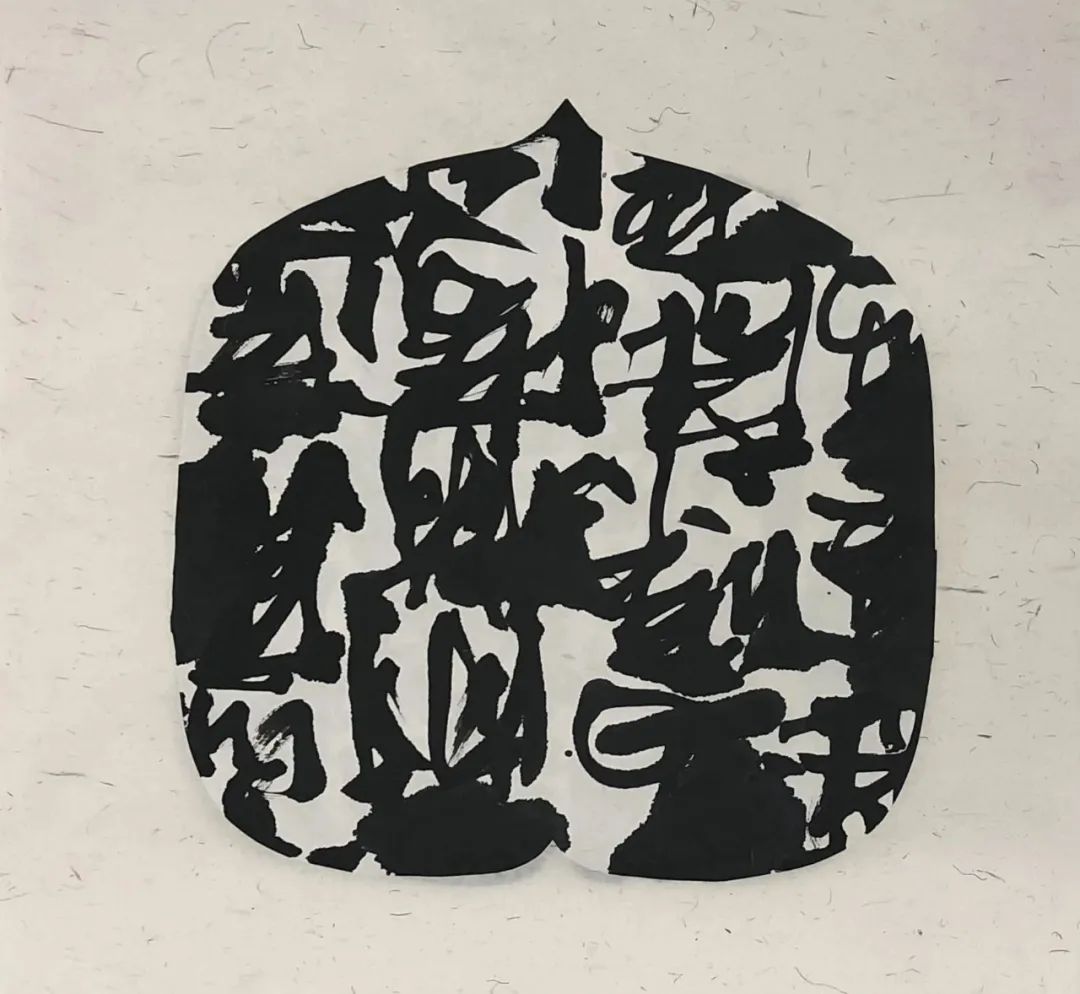
Artist: Zhongou Xu
Title: In the name of Walnut
CalligraphyI-7
Medium: Sumi ink Calligraphy on
rice paper
Size 20”x26.5”
而在技术上,徐仲偶已经不再局限于版画特有的性质,大胆尝试不同的语言表现,同一个版,可以用红色表达,也可以用黑色印制,在其上,徐仲偶又手工绘制了直线穿越核桃,在视觉上打破了核桃曲线丰满的面,造成一种鲜明的视觉对比,将版画延伸成独幅作品的呈现。而在内部,其在制作过程中,又充分利用木板本身的缺失痕迹,注意随机生成的语言表现,造成更多的偶然印痕,例如他会将阳光落在木板上的阴影作为内容嵌入到核桃里去。可以看出,徐仲偶在其版画刻制中重视了一种直觉的创造,避免了事先画面被设计的僵硬制作,而在整体上,又体现出一种高度整体的把握。他的作品始终保持了一种具象外形单纯里面内容丰富的视觉效果,使符号的形象统一性地贯穿系列所有作品,也充分利用了印制技术,让版画特有的黑白灰印痕显现出一种独特的美学品质。
Technically, Xu Zhongou is no longer confined to the unique nature of printmaking. He boldly attempts different language expressions. The same printmaking can be expressed in red or printed in black.On this, Xu Zhongou hand-drew straight lines passing through walnuts, visually breaking the full curves of the walnuts and creating a sharp visual contrast, extending the printmaking into a single work of presentation. Internally, during the production process, it makes full use of the missing marks of the wooden board itself, pays attention to the randomly generated language expression, and creates more accidental imprints. For example, it would embed the shadow of sunlight falling on the wooden board as content into the walnut. It can be seen that Xu Zhongou attached great importance to the creation of intuition in his printmaking, avoiding the stiff production of pre-designed images. On the whole, it also demonstrated a highly holistic grasp. His works always maintain a visual effect of simple figurative forms and rich content inside, making the image of the symbols uniformly run through all the works in the series. He also makes full use of printing technology, allowing the characteristic black, white and gray imprints of prints to reveal a unique aesthetic quality.



徐仲偶的作品,不断通过时间证明着自己的此在,思想的存在,而长长的一个系列,极致透彻地阐释着一个主题,他的作品,在告诉着我们一个艺术的真谛,艺术的根本就是要解决怎么画的问题。这表明了一个艺术家,必须独立地以自己的眼光观看世界,审视万物,从容恒久地表达自己的体悟,借以启示世人。
Xu Zhongou's works constantly prove his identity and the existence of his thoughts through time. A long series thoroughly explains a theme. His works are telling us the true meaning of art: the essence of art is to solve the problem of how to paint. This indicates that an artist must independently view the world with his own eyes, examine all things, and express his own insights calmly and persistently, thereby enlightening the world.


